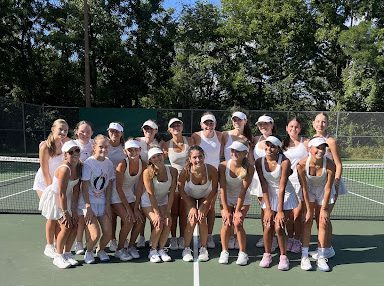Lake Ellyn, and other local lakes, often host families who donate some spare picnic food to waterfowl, but this activity causes great harm to the surrounding ecosystem.
Artificial feeding harms the surrounding environment by spreading disease and malnutrition, but many other activities can reverse these effects or promote a healthier ecosystem.
Giving waterfowl leftover food impairs their health, which leads to severe medical complications.
Most people think of feeding processed food to ducks the same way they think of human “junk food:” unhealthy, but harmless if consumed in moderation.
Just like we have routines of eating snacks at various times of day, we assume waterfowl have developed ways to supplement their natural diet of worms and insects with the occasional benevolent handout.
However, one must not forget that the food-oriented Western world allows us to pick and choose our favorite meals among myriad combinations of taste, texture, and nutritional benefits. We are also not in danger of brightly colored grocery packages conspiring to unanimously escape from the shelves, burrowing deep into the ground or perching atop the highest trees.
To a duck, though, “food” is not a neatly organized buffet. “Bug” is the only taste, and “catch me while you can” is the only means of acquisition.
Now, imagine being that hungry bird, when suddenly a collection of fragrant, sedentary morsels of refined bread descends from the sky. Nibbling a few crumbs before leaving the rest just leaves more hunger to be satisfied by scurrying insects.
So what do you do? Well, if you have any instinct in your waterfowl head, you finish the free snack. And if you’re a human, you may feel the need to pull out some more food for this poor, starving organism.
Once you leave, the duck will of course wait for more. It will survive on bugs until the next feeder comes, and so on. Just like humans, waterfowl suffer from a host of detrimental conditions due to a poor diet.
The Wildlife Center of Virginia states that, in addition to decreases in energy, reproduction, and defense skills, artificial feeding is linked to the terrible “angel wing:” a disorder that causes the wings of affected birds to shrink and curl upwards, rendering the appendages virtually useless.
Nutritional complications only scratch the surface of the consequences of duck feeding. Other results of the feeding instinct include overcrowding and the spread of diseases.
Once again, a pile of stationary food forces instinct to take over nearby waterfowl, drawing them closer to the food source. Unlike bugs, which are either eaten or escaped a few seconds after being spotted, the crackers keep coming.
Quickly, the feeding group expands, turning into a ruthless, competitive bird mob. Smaller ducks who don’t reach the food (or even just happen to be in the way) will get trampled by tougher birds and may suffer injuries from the stampede.
Also, in case you thought all these troubles were limited to waterfowl, The New York State Department of Environmental Conservation cites multiple examples of overcrowding encouraging the efficient spread of any pathogens the birds happen to be carrying, which can then be transmitted to humans. The Department’s list includes “swimmer’s Itch, caused by a parasite that was emitted from ducks attracted to artificial feeding at the town park.”
If any of this rings a bell, you might be recalling the outbreaks of bird flu all over the news. One way to prevent unnecessary spread? Stop gathering around congregations of, well, birds.
Evidence of toxins, water pollution, algae, and fish kills just keep driving the point home: artificial feeding is not just bad for ducks, it’s terrible for the entire ecosystem. As mentioned before, however, duck feeders do not harm their local parks out of malevolence; they simply wish to improve their environments while interacting with wildlife.
With that said, there are also numerous beneficial activities that improve the quality of animals, their habitats, and relationships between humans and their local environments.
Fortunately, artificial feeding can be replaced with equally enjoyable and interactive activities that benefit the surrounding environment and wildlife.
First and foremost: for reasons mentioned above, any kind of handouts will compromise the surrounding wildlife. According to the National Park Service, “To an animal, anything that smells like food is treated like food.”
Even if food ends up on the ground by accident or habit, animal instinct will kick in, inciting a waterfowl flash mob. To ensure that ducks and geese continue to forage on their own, the Park Service advises to “keep a clean picnic area or campsite, and store your food and dispose of garbage in the proper containers.”
Secondly, be responsible with bird feeders. Supplying actual bird seed during the winter months can benefit struggling birds, but make sure you clean and refill feeders regularly and keep them away from each other. The Wild Bird Feeding Institute’s article “Why Bird Feeding is Important” is a fantastic source of information on this topic.
Interviews of local Glen Ellyn bird feeders display some lack of education on the issue: one interviewee explained that some of their feeders were less than a meter apart, and they weren’t sure when the vessels were meant to be cleaned.
Finally, for those who feed ducks just to observe them up close, simple bird watching gets the same job done. Binoculars and fancy apps are not needed; any natural area such as woods, prairie, or wetland will be dense with animals performing all manner of fascinating daily tasks visible to the naked eye.
Now, these solutions are easy enough to implement, but what can be done to stop duck feeding in the first place?
Glen Ellyn happens to have a sizable lake right at its heart, which has served as a communal refuge for humans and ducks alike for over a century. Unfortunately, artificial feeding has been common practice during that time, and the town hasn’t taken many steps to prevent it.
According to Environmental Outreach Specialist Laura Bellmar, “The Park District has a written policy not to feed wildlife. See the attached [Park District Governing Ordinances], section 4.10, E.” When asked if the Park District or any other Glen Ellyn organization had taken steps to reduce artificial feeding, Ms. Bellmar did not give a response.
It turns out that section 4.10, E in the Governing Ordinances is just five words long: “Feeding of wildlife is prohibited.” That’s it. Not to mention that this rule is sandwiched in a list of nine other regulations, themselves buried in page six of a twenty-one page document that is neither light nor engrossing reading (I tried and zoned out in the first paragraph). Thus, this editorial, and its attempts to elaborate on the general rule of “don’t feed the ducks” while spreading the word to a larger audience in a more convenient way.
Many people living near lakes are taught never to feed wildlife, but such trite tidbits of advice are easily pushed to the back of the mind. By moving this issue back into the concern of Glen Ellyn’s residents, we can take steps to cultivate a healthier environment in our parks.












